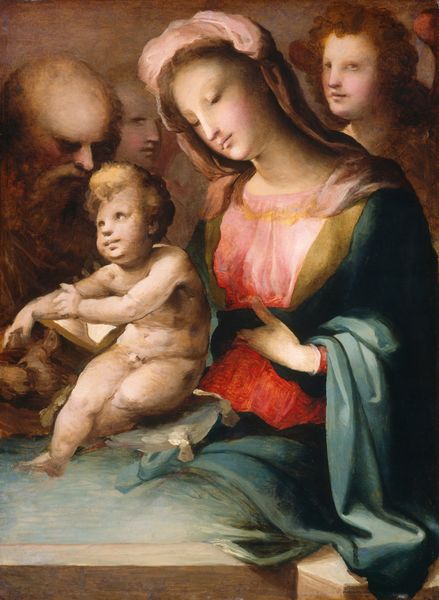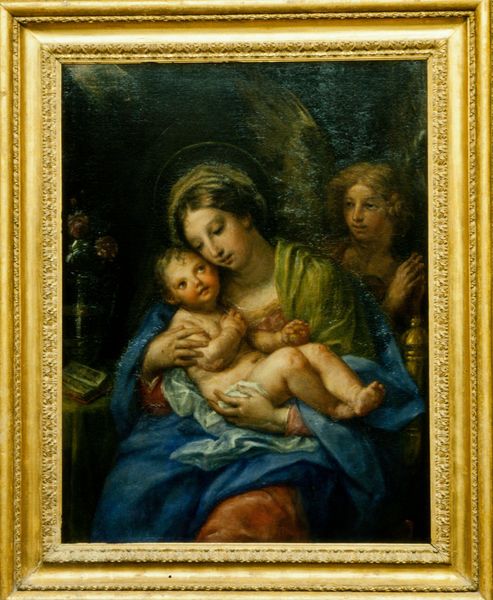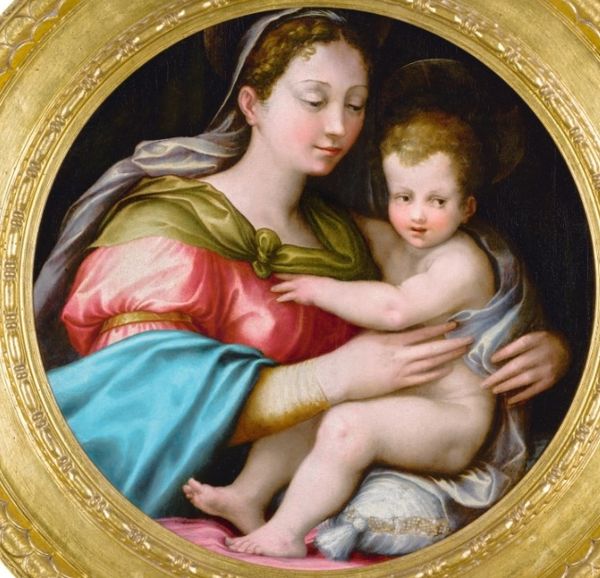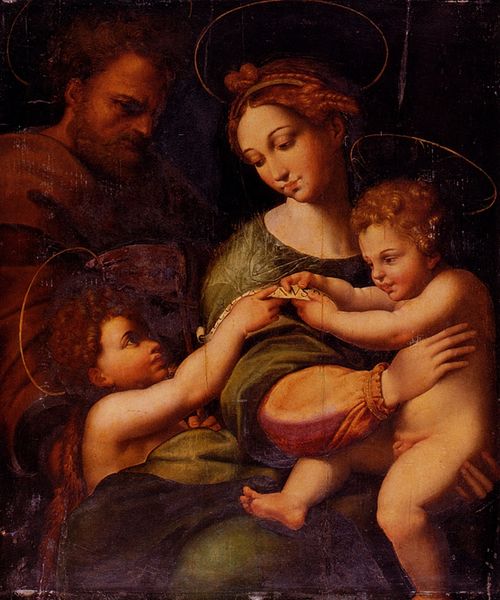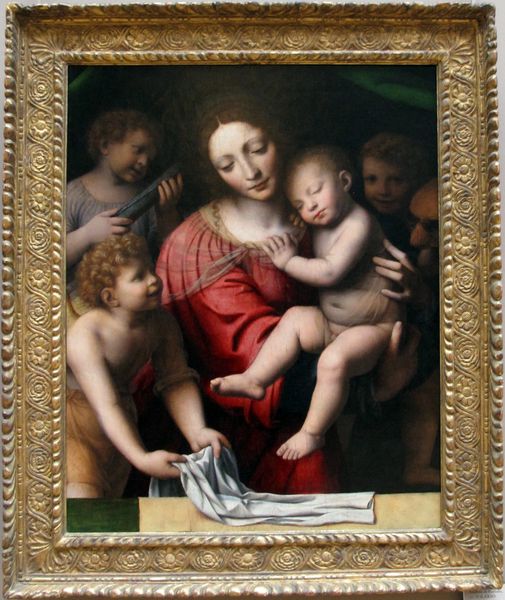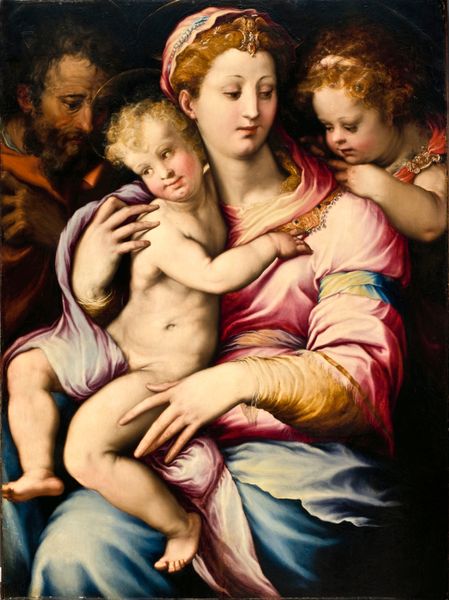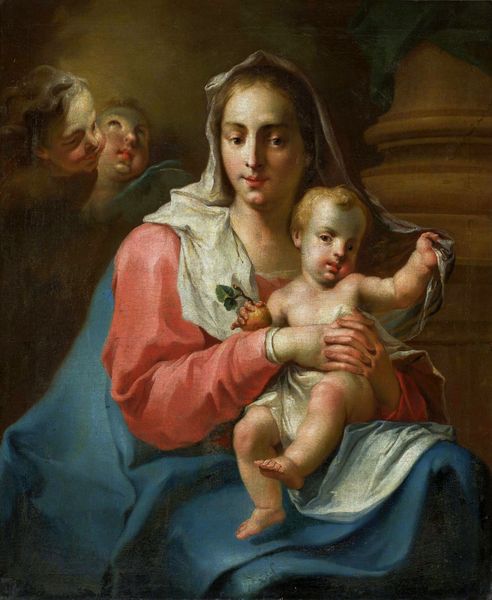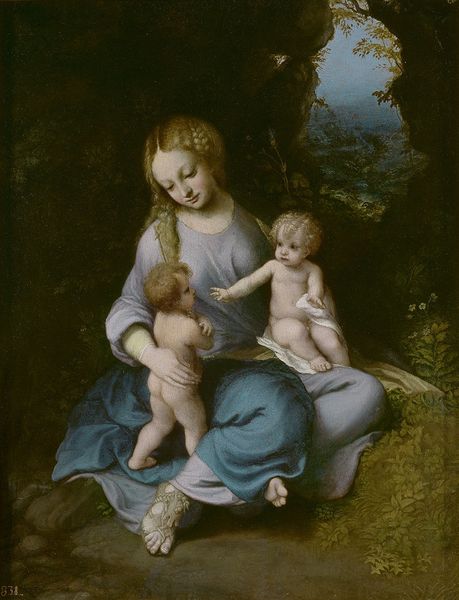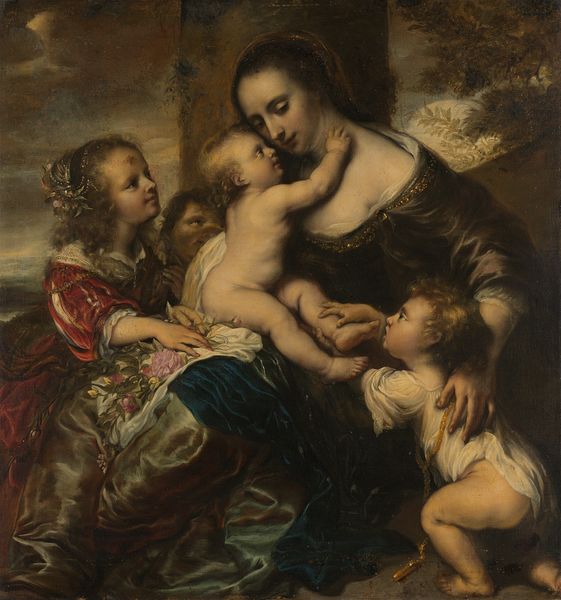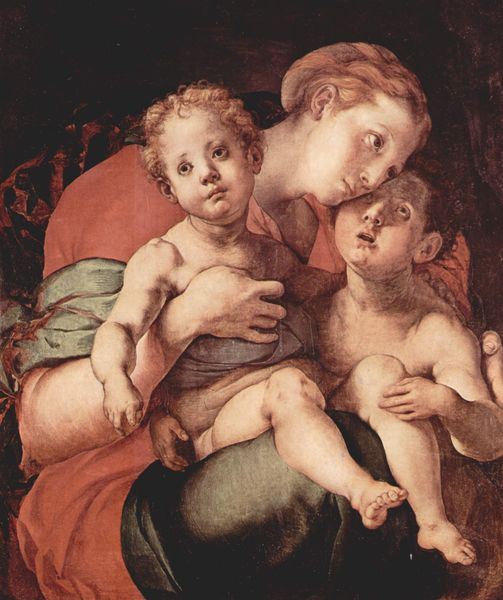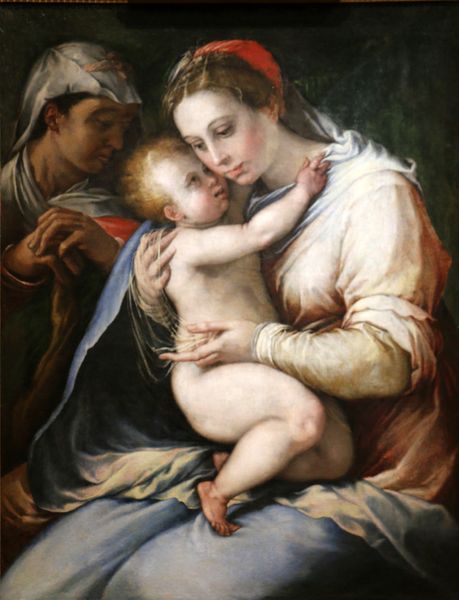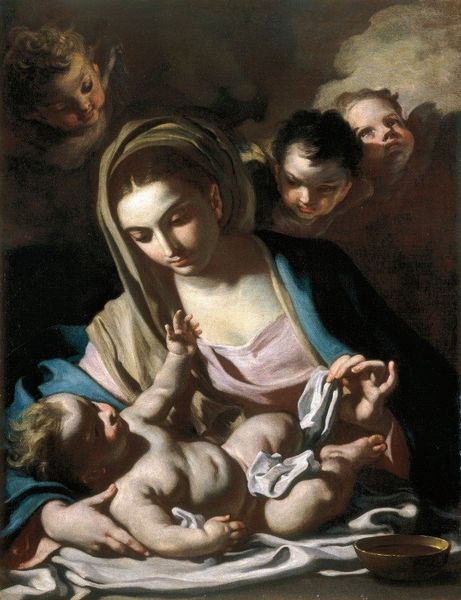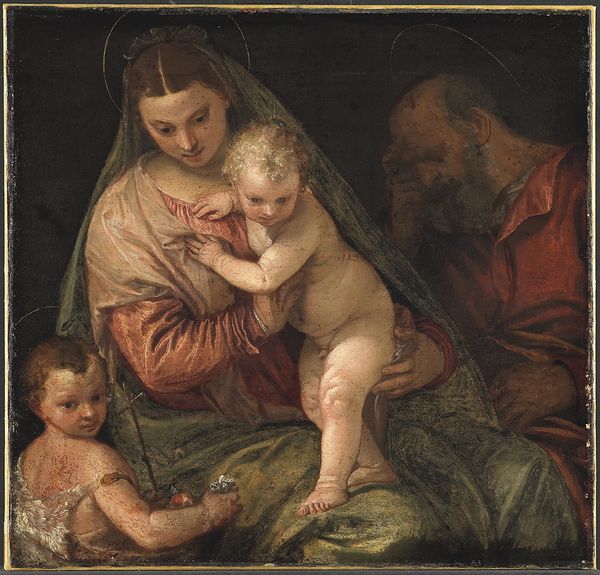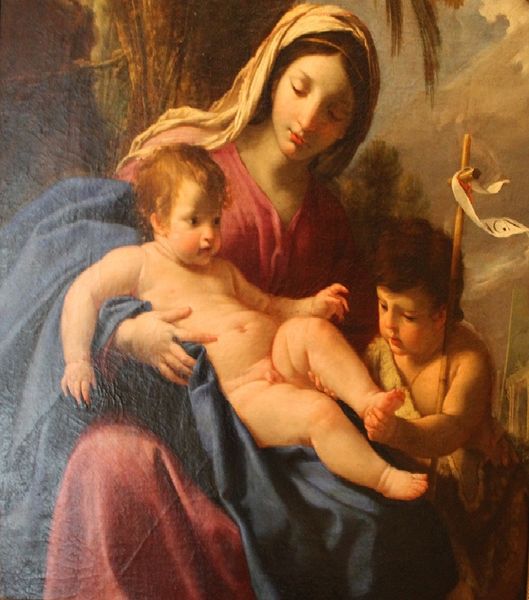
oil-paint
#
portrait
#
high-renaissance
#
oil-paint
#
figuration
#
oil painting
#
italian-renaissance
Copyright: Public domain
Curator: Domenico Beccafumi's oil on panel, “Madonna and Child with Infant John the Baptist,” dating from 1542, presents us with a tender scene. The light catches the figures in such a way that feels incredibly intimate. Editor: The coloring strikes me right away. It's so soft, almost dreamlike, yet there's a tangible weight to the figures, especially in Mary's garments and the child's form. You can almost feel the fabric and the soft skin of the infants. Curator: Beccafumi painted this during a tumultuous period in Italy. The religious and political landscapes were shifting drastically. Viewing this through a lens of power, one could see how images of the Madonna served as visual consolations, offering stability during instability. They reaffirm traditional roles during disruptive periods. Editor: Exactly, and it is equally important to note the medium that would deliver that message to the masses. How might those historical changes be related to the availability and control of resources like pigments and the crafting of panels? Curator: That's a valid point. Considering Mary’s almost mournful expression, do you think we can interpret it as a reflection of contemporary anxieties? We should address the history of powerful female figures within religious frameworks. How is it that the divine feminine gains traction amid periods of strife? Editor: To that, I’d suggest looking closer at the paint itself. How does the layering build that melancholy we both see? There is skill, but let's examine if that skill creates commentary. Are we glorifying labor, commenting on piety, or showcasing available pigments? Curator: Those points allow for a nuanced look at artistic intention, not just devotional sentiment. Perhaps his style created a specific vision of feminine resilience, of a woman quietly enduring the weight of expectation and sorrow. Editor: Indeed. Understanding the materials alongside the symbolism helps ground those readings. We are not only gazing at emotion, we're tracing the fingerprints of production and purpose. Curator: In revisiting this work, I find myself considering not only the artist's skills but the silent narratives of the women whom such imagery comforted—or constrained. Editor: Yes, by looking closely at both labor and context, we uncover new details and invite modern readings of this piece, connecting it to larger conversations on material culture and devotion.
Comments
No comments
Be the first to comment and join the conversation on the ultimate creative platform.
